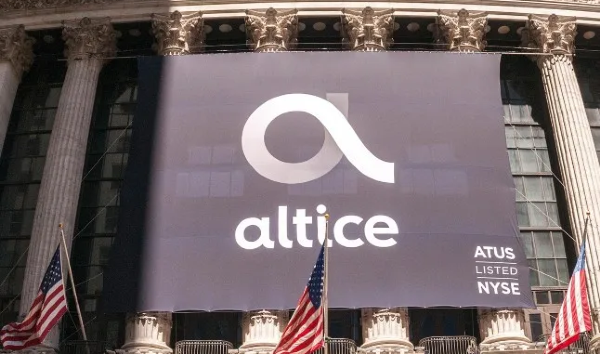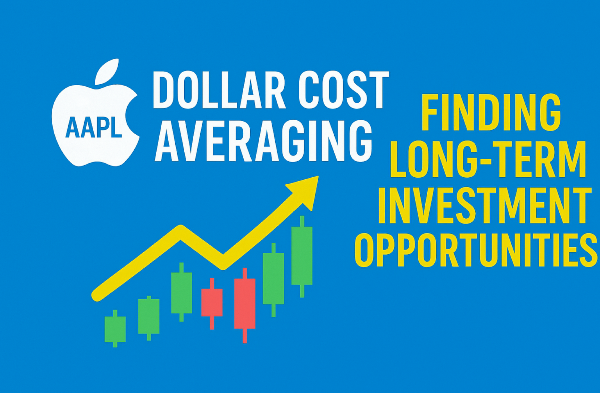If you find any value here, please smash the like button and drop a comment below—two seconds of your time costs nothing but helps the channel immensely. I’m aiming for 500 likes, so let’s hit that goal together. If you’re new, subscribe and ring the bell so you don’t miss future deep dives like this.
I’m not a financial adviser, and this isn’t financial advice. Always do your own due diligence before making any investment decisions.
What Is Big Bear AI?
Big Bear AI is a provider of AI-powered decision intelligence solutions for highly complex, distributed, mission-based environments. Organizations across defense, intelligence, logistics, enterprise operations, autonomous systems, and cybersecurity rely on its predictive analytics and AI capabilities. From supply-chain optimization to healthcare and life-sciences applications, Big Bear custom-designs and implements solutions that address unique operational challenges.
Although rooted in defense and intelligence markets, the company’s commercial footprint is growing rapidly. Its clients include government agencies, manufacturing and warehouse operations, and major healthcare providers, showcasing a diversified base that spans both public and private sectors.
Latest News: Bigger Deals Than You Think
Big Bear AI’s stock has retraced after an incredible summer rally, dropping about 40% back to around $5. But the company continues to land headline-grabbing contracts.
Just days ago, Big Bear announced its Veriscan biometric technology is now deployed at Nashville International Airport (BNA) to enhance passenger processing. U.S. citizens arriving at BNA can move through customs more quickly and seamlessly, thanks to real-time identity verification tools that give officers instant insights.
Even more eye-opening is Big Bear’s multi-year naming-rights partnership with the Washington Commanders. The Commander Training Facility has been rechristened the Big Bear AI Performance Center, and the brand will appear across key assets. According to CEO Kevin Malinan, this NFL alliance is “the first in a series of decisive moves to strengthen our position and unlock the next chapter of growth.”
| Partnership |
Sector |
Scope |
| Nashville International Airport |
Transportation |
Enhanced passenger processing via Veriscan |
| Washington Commanders |
Sports |
Naming rights for training facility; branding assets |
A Missed Opportunity?
Many AI companies have seen stratospheric gains—Palantir, for example, soared over 2,000% in two years. Compared to that, Big Bear AI’s roughly 230% gain in the past year feels modest, and it’s only up about 25% so far in 2025, trading near half its IPO price.
Early-year optimism was fueled by a backlog that management said had jumped from 168 million to 385 million by March—a 2.5x increase. With so many defense, airport, and NFL deals in the pipeline, investors expected not only a significant revenue bump but also a growing backlog to sustain that momentum.
| Metric |
March 2024 |
March 2025 |
| Backlog |
168 million |
385 million |
Earnings Disaster or Now Free to Grow?
In its latest earnings, Big Bear AI reported Q2 revenue of $32.5 million, down 18% from $39 million a year earlier. Gross margin slipped to 25% from 27%, and the net loss ballooned to 228 million, compared to a $14 million loss in Q2 2024.
Management pointed to non-cash changes in derivative liabilities ($135 million) and a goodwill impairment charge ($70.66 million) as primary drivers of the steep loss. Even after excluding those one-time items, the adjusted loss still approached $20 million—a sizable jump from last year’s figures.
| Q2 2024 vs Q2 2025 |
Q2 2024 |
Q2 2025 |
| Revenue |
$39 million |
$32.5 million |
| Gross Margin |
27% |
25% |
| Net Loss |
$14 million |
$228 million |
| Adjusted Loss Ex-Items |
— |
~$20 million |
| Backlog |
— |
$380 million |
Despite a solid $380 million backlog, full-year 2025 revenue guidance stands at just $125–140 million, leaving many wondering if Big Bear AI can convert deals into sustained growth—or if the bloom is off the hype.
Financial Growth, Analyst Sentiment, and Business Model Challenges
Financial Growth—More Progress Needed?
If you’re finding this analysis valuable, don’t forget to give it a thumbs up and subscribe if you’re new. Your support helps fuel more deep dives like this.
Looking at Big Bear AI’s Form 10-Q, revenue for the first six months of 2025 came in at $67 million, against full-year guidance of $125–140 million. If the company replicates H1 performance in H2, that lands right at $134 million—squarely in the guided range but far from the blowout numbers seen at peers like Palantir or SoFi.
Three-year historical context shows stagnation rather than growth. In H1 2022, Big Bear AI generated $74 million, and in H1 2023, $80 million. Despite a flurry of new contracts, the company hasn’t yet outpaced earlier topline figures.
| Period |
H1 2022 |
H1 2023 |
H1 2025 |
| Revenue |
$74 million |
$80 million |
$67 million |
Analysts’ Ratings & Price Targets
Recent analyst revisions have been underwhelming. The consensus price target sits at $6, with two analysts rating the stock a buy and two rating it a hold.
HC Wainwright downgraded its target from $9 to $8 immediately after Q2 results, signaling tempered expectations for near-term upside.
| Analyst |
Rating |
Previous PT |
Current PT |
| HC Wainwright |
Hold |
$9 |
$8 |
| Consensus (4 firms) |
2 Buy, 2 Hold |
— |
$6 |
Palantir vs. Big Bear AI: Different Paths to Growth
Many compare Big Bear AI to Palantir, hoping for a similar meteoric rise. But that comparison overlooks stark contrasts in growth profiles and margins. Palantir consistently beats guidance and delivers explosive revenue and margin expansion quarter after quarter. Big Bear AI’s custom-software approach, by contrast, hasn’t produced the breakout growth investors crave.
The Business Model Flaw: Custom Solutions at a Cost
Big Bear AI’s flagship contract is a $165 million deal to build the Army’s Global Force Information Management Objective Environment. Yet every solution is bespoke. Unlike standard software vendors that sell a core product with add-ons—driving 70–90% gross margins—Big Bear must develop a fresh package for each client. That bespoke model caps its margins below 30% and elongates development timelines.
| Business Model |
Core Software + Customization |
Fully Custom Software |
| Typical Gross Margin |
70–90% |
< 30% |
| Time to Deploy |
Weeks to Months |
Months to Years |
Because each system is unique, backlog conversion is slow despite a hefty $380 million pipeline. The “rule of 40,” a rallying cry in SaaS investing, doesn’t apply here—Big Bear AI’s growth plus profit margin metric barely moves the needle.
Will Big Bear AI Ever Hit $10?
A recent Forbes article asks whether Big Bear AI could rebound to $10. It examines upside drivers and downside risks, but ultimately the article circles back to the same challenge: without a shift toward reusable software components, margin expansion and rapid revenue scaling remain distant goals. Link in the description if you want a deeper read.
Conclusion: Buy, Hold, or Sell?
Big Bear AI boasts real defense and commercial contracts, but revenue has plateaued, margins lag massively, and analysts see limited upside. Until the company evolves its business model toward scalable software, explosive returns look unlikely.
Recommendation: Hold
Let me know your thoughts in the comments—will Big Bear AI break out, or is it trapped by its custom-software model? Always do your own due diligence, and if you enjoyed this breakdown, please like and subscribe. I’ll catch you in the next deep dive.
https://youtu.be/brd7LVQ-Iq4?si=IDBIfri2CjkgRW1R






























If you find any value here, please smash the like button and drop a comment below—two seconds of your time costs nothing but helps the channel immensely. I’m aiming for 500 likes, so let’s hit that goal together. If you’re new, subscribe and ring the bell so you don’t miss future deep dives like this.
I’m not a financial adviser, and this isn’t financial advice. Always do your own due diligence before making any investment decisions.
What Is Big Bear AI?
Big Bear AI is a provider of AI-powered decision intelligence solutions for highly complex, distributed, mission-based environments. Organizations across defense, intelligence, logistics, enterprise operations, autonomous systems, and cybersecurity rely on its predictive analytics and AI capabilities. From supply-chain optimization to healthcare and life-sciences applications, Big Bear custom-designs and implements solutions that address unique operational challenges.
Although rooted in defense and intelligence markets, the company’s commercial footprint is growing rapidly. Its clients include government agencies, manufacturing and warehouse operations, and major healthcare providers, showcasing a diversified base that spans both public and private sectors.
Latest News: Bigger Deals Than You Think
Big Bear AI’s stock has retraced after an incredible summer rally, dropping about 40% back to around $5. But the company continues to land headline-grabbing contracts.
Just days ago, Big Bear announced its Veriscan biometric technology is now deployed at Nashville International Airport (BNA) to enhance passenger processing. U.S. citizens arriving at BNA can move through customs more quickly and seamlessly, thanks to real-time identity verification tools that give officers instant insights.
Even more eye-opening is Big Bear’s multi-year naming-rights partnership with the Washington Commanders. The Commander Training Facility has been rechristened the Big Bear AI Performance Center, and the brand will appear across key assets. According to CEO Kevin Malinan, this NFL alliance is “the first in a series of decisive moves to strengthen our position and unlock the next chapter of growth.”
A Missed Opportunity?
Many AI companies have seen stratospheric gains—Palantir, for example, soared over 2,000% in two years. Compared to that, Big Bear AI’s roughly 230% gain in the past year feels modest, and it’s only up about 25% so far in 2025, trading near half its IPO price.
Early-year optimism was fueled by a backlog that management said had jumped from 168 million to 385 million by March—a 2.5x increase. With so many defense, airport, and NFL deals in the pipeline, investors expected not only a significant revenue bump but also a growing backlog to sustain that momentum.
Earnings Disaster or Now Free to Grow?
In its latest earnings, Big Bear AI reported Q2 revenue of $32.5 million, down 18% from $39 million a year earlier. Gross margin slipped to 25% from 27%, and the net loss ballooned to 228 million, compared to a $14 million loss in Q2 2024.
Management pointed to non-cash changes in derivative liabilities ($135 million) and a goodwill impairment charge ($70.66 million) as primary drivers of the steep loss. Even after excluding those one-time items, the adjusted loss still approached $20 million—a sizable jump from last year’s figures.
Despite a solid $380 million backlog, full-year 2025 revenue guidance stands at just $125–140 million, leaving many wondering if Big Bear AI can convert deals into sustained growth—or if the bloom is off the hype.
Financial Growth, Analyst Sentiment, and Business Model Challenges
Financial Growth—More Progress Needed?
If you’re finding this analysis valuable, don’t forget to give it a thumbs up and subscribe if you’re new. Your support helps fuel more deep dives like this.
Looking at Big Bear AI’s Form 10-Q, revenue for the first six months of 2025 came in at $67 million, against full-year guidance of $125–140 million. If the company replicates H1 performance in H2, that lands right at $134 million—squarely in the guided range but far from the blowout numbers seen at peers like Palantir or SoFi.
Three-year historical context shows stagnation rather than growth. In H1 2022, Big Bear AI generated $74 million, and in H1 2023, $80 million. Despite a flurry of new contracts, the company hasn’t yet outpaced earlier topline figures.
Analysts’ Ratings & Price Targets
Recent analyst revisions have been underwhelming. The consensus price target sits at $6, with two analysts rating the stock a buy and two rating it a hold.
HC Wainwright downgraded its target from $9 to $8 immediately after Q2 results, signaling tempered expectations for near-term upside.
Palantir vs. Big Bear AI: Different Paths to Growth
Many compare Big Bear AI to Palantir, hoping for a similar meteoric rise. But that comparison overlooks stark contrasts in growth profiles and margins. Palantir consistently beats guidance and delivers explosive revenue and margin expansion quarter after quarter. Big Bear AI’s custom-software approach, by contrast, hasn’t produced the breakout growth investors crave.
The Business Model Flaw: Custom Solutions at a Cost
Big Bear AI’s flagship contract is a $165 million deal to build the Army’s Global Force Information Management Objective Environment. Yet every solution is bespoke. Unlike standard software vendors that sell a core product with add-ons—driving 70–90% gross margins—Big Bear must develop a fresh package for each client. That bespoke model caps its margins below 30% and elongates development timelines.
Because each system is unique, backlog conversion is slow despite a hefty $380 million pipeline. The “rule of 40,” a rallying cry in SaaS investing, doesn’t apply here—Big Bear AI’s growth plus profit margin metric barely moves the needle.
Will Big Bear AI Ever Hit $10?
A recent Forbes article asks whether Big Bear AI could rebound to $10. It examines upside drivers and downside risks, but ultimately the article circles back to the same challenge: without a shift toward reusable software components, margin expansion and rapid revenue scaling remain distant goals. Link in the description if you want a deeper read.
Conclusion: Buy, Hold, or Sell?
Big Bear AI boasts real defense and commercial contracts, but revenue has plateaued, margins lag massively, and analysts see limited upside. Until the company evolves its business model toward scalable software, explosive returns look unlikely.
Recommendation: Hold
Let me know your thoughts in the comments—will Big Bear AI break out, or is it trapped by its custom-software model? Always do your own due diligence, and if you enjoyed this breakdown, please like and subscribe. I’ll catch you in the next deep dive.
https://youtu.be/brd7LVQ-Iq4?si=IDBIfri2CjkgRW1R